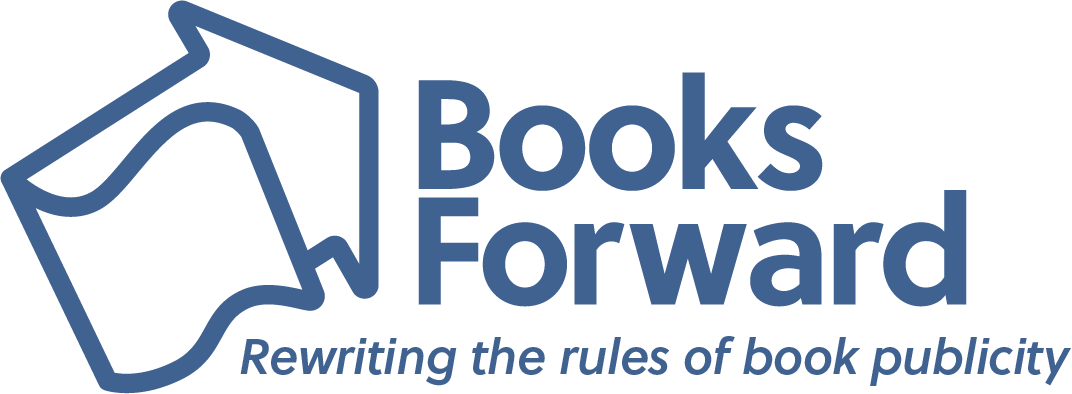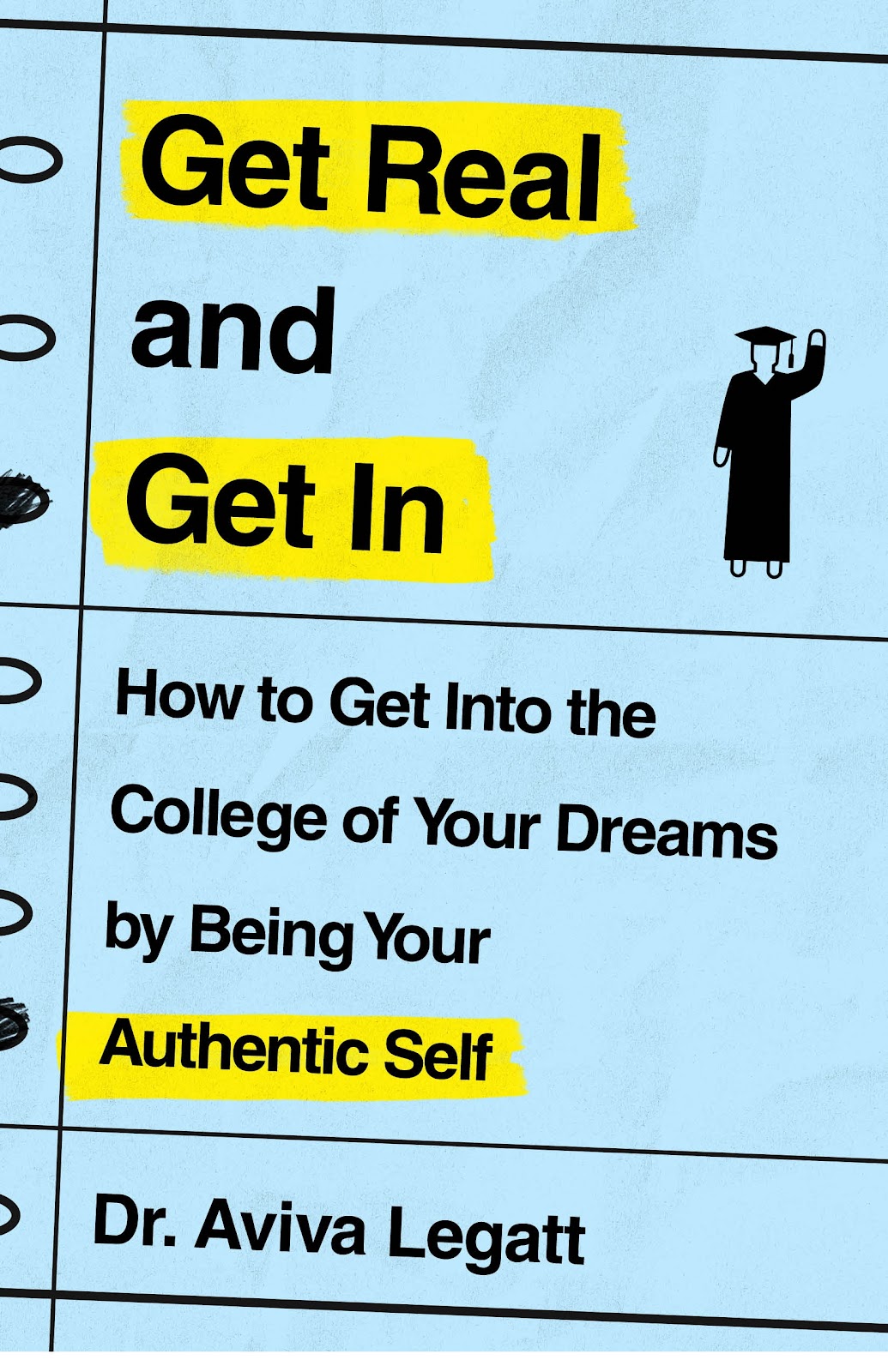 NEW YORK, New York – From Ivy League admissions expert Dr. Aviva Legatt comes an insider’s college admissions guide that teaches students to identify and harness their authentic passions, stand out from the crowd, and achieve their dreams in college and beyond, “Get Real and Get In” (St. Martin’s Griffin, August 3, 2021).
NEW YORK, New York – From Ivy League admissions expert Dr. Aviva Legatt comes an insider’s college admissions guide that teaches students to identify and harness their authentic passions, stand out from the crowd, and achieve their dreams in college and beyond, “Get Real and Get In” (St. Martin’s Griffin, August 3, 2021).
“Get Real and Get In” teaches readers to think outside of the box and focus on what admissions officers are really looking for—young people who dare to be their most authentic selves. Through engaging, accessible, and empathetic prose, this book forms an inspirational roadmap for readers to uncover their true passions and leverage them to create applications that truly stand out from the crowd. It also features a variety of useful exercises and candid stories from many influential figures like Adam Grant (New York Times best-selling author), Dorie Clark (Harvard Business Review contributor), and Thomas Kail (Tony winning director of Hamilton: An American Musical) which teach students to look beyond just getting into a “good” college and focus more actively on identifying and attaining their long-term goals.
“Get Real and Get In” is designed to ignite an essential mindset shift in students: stop trying to just “get in” and start figuring out exactly what you want from life and how to get it. Stop managing the impressions you make on admissions officers and start defying impressions. This is an essential guide to cutting through the noise of the admissions process and gaining the confidence to forge one’s own path to success—in college and beyond.
“Get Real and Get In: How To Get Into the College of Your Dreams by Being Your Authentic Self”
Dr. Aviva Legatt | Aug. 3, 2021 | St. Martin’s Griffin
YA Nonfiction, College Guides | 288 pages
Paperback | ISBN: 978-1250773968 | $17.99
Ebook | ASIN: B08FZ8SH3Z | $11.99
Early Praise for “Get Real and Get In”
“This book is full of the kind of advice that college applicants crave—and every helicopter parent desperately needs. Not just for getting into college, but becoming a leader any college would be proud to call an alum.”
—Adam Grant, New York Times bestselling author of ORIGINALS, GIVE AND TAKE, THINK AGAIN and OPTION B with Sheryl Sandberg
“The decisions we make around college profoundly shape our personal and professional trajectories. Aviva Legatt is a sage guide along the way, helping young people make smarter choices as they navigate their futures. Get Real and Get In is both grounding and inspiring.”
—Dorie Clark, adjunct professor at Duke University’s Fuqua School of Business and author, Entrepreneurial You and Stand Out
“I strongly advise all students and parents who will be going through the college application process to benefit from this outstanding book.”
—Joelle Hatem Ancel, Parent and Lawyer, Hatem Law Office, Istanbul, Turkey
“If practical is your thing (and it’s definitely mine), Dr. Legatt’s book offers actionable advice to approaching college admissions with the holistic mindset that admissions officers use themselves when reviewing applications. Get Real and Get In is the gentle, yet firm reminder to you, the applicant, that success trumps name brand when selecting a school and that there’s more than one way to get to where you’re trying to go in life.”
—Ethan Sawyer, College Essay Guy, and author, College Essay Essentials: A Step-by-Step Guide to Writing a Successful College Admissions Essay
About the Author
 Dr. Aviva Legatt is the admissions expert and founder of Ivy Insight, the gold standard in college admissions consulting for undergraduate college applications. An in-demand leadership and college admissions speaker with a fresh perspective, Dr. Legatt has been hailed by the New York Times as a trustworthy expert on college admissions, and recognized as an expert in corporate culture and diversity as a faculty member for Coursera and the University of Pennsylvania.
Dr. Aviva Legatt is the admissions expert and founder of Ivy Insight, the gold standard in college admissions consulting for undergraduate college applications. An in-demand leadership and college admissions speaker with a fresh perspective, Dr. Legatt has been hailed by the New York Times as a trustworthy expert on college admissions, and recognized as an expert in corporate culture and diversity as a faculty member for Coursera and the University of Pennsylvania.
Follow Dr. Aviva Legatt on Instagram and Twitter @avivalegatt
In an interview, Dr. Aviva Legatt can discuss:
- What factors to consider when applying to college — You may have very practical reasons to narrow your school list: cost, geography, size, and feasibility of getting in. But once you’ve done the pragmatic work of narrowing options, remember that it’s not about finding the “best” college—it’s about finding the best college for you.
- College admissions in the age of Covid and the unique challenges students are facing during the application process
- The most common pitfalls in applying to college, including the Impressiveness Paradox — Admissions officers at top universities know students are trying to impress them with all the activities they’re doing outside of the classroom. But paradoxically, these admissions officers are also underwhelmed by students who are clearly managing their lives outside of the classroom solely to impress the committee. The paradox is that almost all impressiveness goes out the window when you’re trying to be impressive.
- Shifting your mindset: Stop trying to just “get in” and start figuring out exactly what you want from life and how to get it, preparing students for success beyond the college application process
- The 2019 college admissions scandal
- Her personal experience applying to college
- Advice for students whose parents or guardians are not supportive of their choice of school or field of study
- Why it is important to cultivate connections with key university personnel (like administrators, alumni and admissions counselors) and how to authentically build these relationships
An Interview with Dr. Aviva Legatt about “Get Real and Get In”
Before we dive into your new book, “Get Real and Get In,” can you tell us about your own experience applying to college?
The year was 2000. I was attending a competitive high school, Princeton High School (PHS), in Princeton, New Jersey. I absolutely loved my experience there, but there was one problem. Everyone who attended was a rock star, on and off paper, and it crushed me. Here are the receipts: I went to high school at the same time as Oscar-Winning “La La Land” and “Whiplash” writer/director Damien Chazelle (he was in the class of ‘03). I also attended school with a now-famous yogi, two future Broadway stars, and several would-be top doctors in the U.S. I knew multiple people who got a 1600 on the SAT freshman year (without studying…or so they said). I spent much of my four years at PHS engaged in deep conversations with brilliant peers whose worldly knowledge far exceeded mine.
While it was an extraordinary opportunity to learn in this environment, I was barely keeping up with my classmates academically, artistically, or extra-curricularly. They were in AP’s; I wasn’t. They were in tons of clubs; I wasn’t. I wanted to do theatre and was fairly talented…but I was competing for roles with future Broadway stars and Oscar winners! My dreams seemed meant for them, not me.
At PHS, there was an overarching belief that attending a top college was the only way to gain success in life. I didn’t grow up with this belief, but it was in the air in my high school and got hammered into me by teachers and classmates.
How did this impact my college plans? I felt I had to distinguish myself in some way from my classmates. But what could I do? I knew I had to get a head start. So, in sophomore year, I selected my first-choice college: NYU.
NYU had a music business program. I was obsessed with Hanson (yes, the MMMBop brothers—Google it!) and musical theatre—and the music business route seemed like a logical choice at the time. Back then, NYU’s Music Business program was considered one of the best in the country. In the years that followed, I did all I could to make sure I had everything in place for NYU. Test scores at target range: check. Grades good enough: check. Enough “worthy” extracurriculars (or so I hoped): check.
I visited every NYU event I could, taking campus tours, attending information sessions, and going to prospective student gatherings at school. I even asked my dad to contact an NYU professor we knew and visited him at his home. Fortunately, Professor Walter Reinhold, who later became my music history professor, put in a good word for me. I applied for Early Decision (not knowing how this would impact my family and myself, AKA adding quite a bit to my student loans!).
Everything was looking good for my application—at least, as good it was going to look. But the pressure became too much for me in October of 2000. As a high school senior, I got stress-induced pneumonia the month before applications were due. I had to miss several weeks of school and was physically incapacitated for several months afterward, not to mention emotionally exhausted.
I barely took time to acknowledge my pneumonia, though (or the psychological/emotional implications of my illness). I waited and waited for my admissions decision to come in, and when that envelope finally came…
BOOM. Accepted. I cried tears of relief, balled up on the floor.
Why did I get accepted? I’ll never know for sure, even though I’ve since served as a member and chair of an Ivy League admissions committee.
But I’m fairly certain that I got into NYU because of my “demonstrated interest” (AKA obsession and persistence), alumni connections (I was a triple legacy), adversity (my father became very ill when I was in high school, which probably explains why I was so focused on a brighter future), and my attendance at PHS—a high school which had a good relationship with NYU at the time. My grades and test scores were extremely average for NYU and probably on the lower end of my other classmates who applied.
But all that mattered to me was that I got in.
Was NYU the thing that made a difference in my life? Did it make me successful today? Maybe my college experience has something to do with my successful career. But ultimately, college was the step that prepared me for the next phase of my life. It was not the making of me, nor the end of my story.
As it turned out, my high school experience laid the groundwork for my current career. Did I know then that my successes now would stem from that four-year period at PHS in which I felt perpetually frustrated and awkward? Um, no!
But with the advantage of time, I can now see how it all fits together. My time at PHS inspired me to go into the field of higher education. PHS got me obsessed with college! My high school experience led to my 15+ year career in higher education. In that time I’ve had jobs in admissions, academic leadership, teaching, and counseling students about how to get into top colleges.
Admission to NYU and any other successes I’ve had through the years have come because of hard work and luck. There is no secret formula.
Here’s what I’ve learned, through my own professional and personal experience and through interviewing the wonderful people you’ll meet in this book: success doesn’t go in a straight line. Rather than create a “perfect” plan for success to be followed no matter what, we must be clear on our own values and goals. Then we can use what happens in life, whether positive or negative, as fuel for our next endeavor. Our mindset matters—when we keep an open mind and don’t force ourselves onto a certain pathway because we think that pathway will make us successful, then we are most able to find true success.
While I could have written a book about how to “wow” the admissions committee by being the best underwater basket-weaving Irish step dancer (just kidding…but seriously that would be a very memorable applicant!), I decided instead to have conversations with widely-admired influencers about how college and other turning points affected their lives. Many of their pivotal life moments took place during college, but many moments that paved the way for future success had absolutely nothing to do with college. Because, as we’ll talk about in this book, your life amounts to so much more than where you go to college.
What are the most common misconceptions about applying to college?
Most people focus too much on checking the boxes and clearing the hurdles of the college application process and lose sight of the important big picture about what you really should be doing on the way to college: figuring out who you are and what you want.
As a former admissions committee member at an Ivy League university, I know a thing or two about what separates the accepted from the rejected. I want to share something important with you, something I don’t think you’re going to hear from other college admissions officers. It’s really counter-intuitive, but here it is.
Admissions officers at top universities know you’re trying to impress us with all that stuff you’re doing outside of the classroom. We know that we’re asking a lot of you. But paradoxically, admissions officers are underwhelmed by students who are clearly managing their lives outside of the classroom in order to impress the committee.
I call it the “Impressiveness Paradox.” The paradox is that almost all impressiveness goes out the window when you’re trying to be impressive.
You know this intuitively in your own social circle. No one is impressed by someone who is trying too hard to make an impression. Like when your classmate shows off their latest selfie on social media, and you know it’s totally got a filter. In that situation, it feels like someone trying to “play” you. You know the person is faking.
Exactly the same dynamic applies when admissions officers are sitting around the committee table, making decisions on your application.
There are two main pitfalls in creating your application (and the life you’re presenting in the app). The first is not being impressive at all: no clubs. So-so grades. Activities you tried for a semester, then pooped out on. I’m not going to talk about that one. If you care enough about your future to read a book like this, I doubt you’re at risk of leaving no impression at all.
However, there’s a second pitfall, one you’re probably much more at risk of falling into (without even knowing it). That’s the pitfall of seeming fake. You’re overly earnest in your application. You wax poetic about your involvement in the “Earth Club” and make a deadly-serious pledge to save every honeybee by graduation. You’re not just involved in clubs—you’re president of every one.
It all smacks of fake-ness. There’s just no other way to put it.
It’s not that we think you’re lying to us (we can spot the true liars! That’s not what we’re talking about). But admissions counselors get the feeling that everything has been pre-ordained, pre-managed, and pre-packaged to impress us–which is not impressive.
I want you to avoid this pitfall: that’s why I wrote this book. “Getting real” is the first step to getting in and, most importantly, getting what you want out of life.
What are some key factors students should consider when narrowing down which colleges to apply to?
You may have very practical reasons to narrow your school list: cost, geography, size, and feasibility of getting in. But once you’ve done the pragmatic work of narrowing your options, remember that it’s not about finding the “best” college—it’s about finding the best college for you.
Here’s some super-practical advice on ways you can find the right college for you. Below are five questions you can ask yourself when scouting colleges. They’re designed to help you learn about an institution’s values and priorities. Do they match up with your own?
For instance: Let’s pretend you’re interested in going to Carnegie Mellon’s Tepper School of Business. You owe it to yourself to do some research:
Question 1: What is the college’s culture and character?
Head over to the university’s “about” page on their website and check out “Our Mission and Vision,” (or something similar). A school’s mission statement is likely to be several paragraphs long, but you might find one sentence that summarizes it.
CMU’s Tepper School mission/vision reads like this: “The Tepper School of Business is committed to improving the critical thinking and leadership capabilities of individuals so as to enhance their value to business and society.” (That’s a bit dry, but hey—it’s for a business school!)
The motto is a short phrase or saying that captures a school’s history, character, and culture. It provides a sense of the school’s values and educational philosophy. Carnegie Mellon University’s motto is “My heart is in the work.”
For me, this phrase suggests that we can’t separate the core of who we are from what we do. Does this sound like you? Perhaps you’re more philosophically minded and believe we’re a lot more than the work we end up doing in the world. If a school’s motto doesn’t align with your own internal compass, it may be best to choose a different school.
Question 2: What are the college’s strategic goals for the next few years?
Check for the university’s published strategic plan. This document announces an intention to support that plan with resources and, most important for you, with students who can take advantage of those resources. Some college presidents may be looking to enhance community engagement, while others may be looking to advance global opportunities. For Carnegie Mellon and Tepper, key priorities are to “foster innovation and to use data for social good.”
This means that Tepper may be interested in students who have launched a nonprofit, have worked with big data, or are highly engaged in volunteer work. Does that align with the work you’ve been doing throughout high school?
If so, awesome! You can wow an admissions professional by showing them you understand the link between your passions and experiences and the school’s stated goals. Conversely, the school can provide you with resources, opportunities, and academic programs to take you to the next level.
Question 3: What are the academic choices and how are they structured?
Does the school use block scheduling (scheduling short but intensive classes), or traditional semesters? Does the school emphasize a core curriculum, or their lack of a core curriculum? What about the subject you’re interested in—what kind of research are students and faculty doing within this program?
Think about what you might like to major in and check out those academic programs. Would going to School XYZ adequately prepare you for a future in that field?
At Carnegie Mellon/Tepper, there are ten concentrations to choose from. The faculty hope students “enhance their skills in quantitative and analytic reasoning,” and the school aims to “provide the social, economic and political context for understanding business decisions in a global environment.” If numbers, data, and the influence of external forces on business decisions fascinate you, Tepper might just be the place for you.
Question 4: What college-based initiatives are being funded through donations?
A more to-the-point way to ask this: where’s the money?
Knowing where the money is flowing indicates where school priorities are today or where they may go tomorrow. You can check this out for yourself via press releases on college and university websites. You can also investigate The Chronicle of Philanthropy, at philanthropy.com. Check out the academic areas of interest to you. Has your potential program just received a big fat wad of cash? More money means more opportunities—maybe for scholarships, cool new study abroad programs, improved facilities, etc.
Let’s look at Tepper again. The Tepper family gave two BIG donations in the last twenty years: they donated $55 million in 2004 and $67 million in 2013. Since these donations were received, the school has expanded its facilities and strengthened its global reputation.
You want to know if the school that “puts its money where its mouth is,” i.e. funds the initiatives they claim to care about. Conversely, if your potential college is donating to causes and programs that go against your core values, you don’t want to find out about it midway through your first semester.
Question 5: What connections and relationships can you build with alumni, current students, administrators and professors of the college?
Establishing contact with people associated with the college can give you a personalized look at life inside. You can get a “sneak peek” to help you determine if said college is really right for you.
Don’t know where to find alumni? A quick online search can yield tons of potential contacts. Check out regional alumni groups listed on the college’s website; see if there are any alumni you’re connected to through your high school, or through social media. Find someone who seems nice and ask if you can give them a call. Or better still, meet for coffee. Going on informational interviews with alumni will give you a sense of what college life is like and how your interests might fit with the opportunities said college offers. But don’t stop with alumni! Go on campus visits or attend summer programs. Talk with administrators, current college students, and professors.
Establishing relationships like this will help you identify what elements of the college might fit with your interests. And it doesn’t hurt your chances of getting in. Ever heard “it’s not what you know, it’s who you know?” (There’s a whole chapter on that later in this book!) The more relationships you build with people associated with the college, the more people you have invested in the fate of your application. AKA, you’ll have more people pulling for you—always a good thing!
Given so many high school seniors spent the past year or so being educated from home due to Covid, what unique challenges do they face when applying for college?
For 2021, here are the top things that applicants should pay attention to:
Trend 1: Authenticity and resilience are prized traits for applicants
I often tell my clients that admissions committees are less interested in students who dabble in a dozen clubs than those who go all-in on their strengths and show excellence in their chosen fields. This has never been more true than in the Covid-19 era, when many students do not have the option to participate in extracurriculars as they have in years past.
In my book “Get Real and Get In,” I highlight students who have doubled down on their strengths and “wowed” admissions committees by being themselves. There are plenty of ways students can get creative and showcase their talents and hard work. I’ve had clients write books, conduct sophisticated research, and found national and global organizations. Colleges want to see applicants with the internal drive and resilience to lead something bigger than themselves. Stories of adaptability, ingenuity, and community-mindedness will undoubtedly impress in the pandemic era.
Trend 2: Standardized tests will be “optional but preferred”
The list of top-tier universities which have de-emphasized test scores has grown to over 900 as of this writing. Yet this does not mean a more level playing field for all students. Unfortunately, universities in which an SAT or ACT score is optional tend to accept students with test scores more frequently than they do those students without. For example, at the University of Pennsylvania, 75% of students admitted in the early round submitted standardized test scores, whereas only 25 percent did not. Georgetown University only accepted 7.34% of its early action pool that did not include standardized test scores.
This trend causes some to question: what does ‘test optional’ really mean if, all other factors being equal, universities more frequently choose the student with test scores? Critics claim that an “optional but preferred” testing policy pays lip service to the values of diversity, equity, and inclusion—while continuing to advantage students who have the means to prepare for and take standardized tests.
Trend 3: More students will continue to apply to early admission programs
In the fall of 2020, early admission applications to Penn rose by 23%. MIT saw an unprecedented 62% increase in early applications from the fall of 2019 to 2020. Harvard has seen an increase of 57% from last year. This dramatic increase in early applicants among highly competitive schools may be explained by the fact that many of these schools, including all of the Ivies, no longer require SAT and ACT scores. Another factor: in years past (before the pandemic), students who applied early were more likely to gain acceptance—though the rate of early acceptance is decreasing at elite institutions due to the sheer volume of applicants. For instance, Harvard accepted about 7% of its early applicants in the fall of 2020, as opposed to nearly 14% of its early applicants in 2019. With travel plans curbed and high school seniors choosing to connect virtually with universities, I predict that students will continue applying in high numbers to highly selective colleges which they may not have considered pre-pandemic.
Trend 4: The return of international students to campus
With the advent of the Biden administration, I predict we will see more international students back on campuses. The Trump administration proposed legislation that would limit international student visas to four years (and in the case of some countries, two years). This was in opposition to the long-standing practice of allowing students to stay in the US as long as they are in school and progressing in their studies. Trump’s policies resulted in a drastic decrease in the number of international student visas issued, from more than 600,000 in 2015 to 364,204 in 2019.
In a pre-election poll conducted by the Graduate Management Association Council, international candidates indicated that they would be more likely to matriculate in the U.S. if Biden became president. Under the new administration, federal agencies will likely work hard to facilitate international students’ higher education. I believe we will see a significant increase in international scholars, even if some Covid-19 restrictions remain in place across college campuses.
Trend 5: More students taking a gap year before college
The Covid-19 pandemic caused many students to consider a non-traditional start to college. The number of students who chose to take a gap year rose significantly in the fall of 2020. The class of 2021 may choose a similar path and defer their college admission in order to explore non-academic interests. I predict that many students who choose a gap year will involve themselves in civic action.
The activism and organizing efforts of Gen Z, born in the late ‘90s, are well documented and have been compared to the youth movements of the 1960’s and 70’s. Members of Gen Z—which include current high school seniors—report being highly concerned about the environment, racism, discrimination against the LGBTQ community, economic inequality, and many other issues. Given the unrest in 2020 in regards to racism and pandemic inequalities, there will be a strong pull for future college students to go out and make a difference in their communities. This will especially be true if Covid-era restrictions remain in place this fall.
Other Resources:
How to Ace Your Covid-19 College Essay:
https://www.forbes.com/sites/avivalegatt/2021/03/17/how-to-ace-your-covid-19-college-essay/?sh=1cc54da67220
How Students Can Succeed Despite Covid-19:
https://www.forbes.com/sites/avivalegatt/2020/07/31/college-plans-interrupted-how-students-can-succeed-despite-covid-19/?sh=2d863fa82637
Four Ways Covid is Changing College Admissions:
https://www.forbes.com/sites/avivalegatt/2020/04/29/4-ways-the-coronavirus-is-changing-college-admissions/?sh=1ca655e430f3
And my podcast episode:
The half-truth behind test optional policies: https://podcasts.apple.com/us/podcast/half-truth-behind-test-optional-policies-at-harvard/id1547285654?i=1000507830798
What makes “Get Real and Get In” so different from other college guides?
No other book on the market covers the same subject matter as “Get Real and Get In: How to Get Into the College of Your Dreams by Being Your Authentic Self”– i.e., presenting students and families with personal narratives from successful people as a conduit to experiencing a mindset shift in the college application process. Other comparable books focus on the frenzy and how to manage impressions made on admissions officers (e.g. get good test scores, take this specific set of extracurriculars) rather than how to defy impressions. This book will help prepare students for success beyond the college application process.
More and more, students and parents recognize the need to think “out of the box” when it comes to college applications. This book harnesses that mentality and encourages students to forge their own path to success for college—and life.
How important is it to go to an Ivy League school? How drastically does it change your prospects after graduation? Do you have to go to a “big school” to achieve big things?
Figuring out what school you want to go to is a part of that journey of figuring out who you are and what you want. Not every school will be an equally helpful conduit to getting what you want. An Ivy League school is a great opportunity provider for many students, but plenty others struggle at these colleges because they have a hard time standing out and/or keeping up with equally talented peers.
A person’s behavior and success is a direct outcome of the environment in which they are living and learning. It’s important to choose the right environment to live and learn in so that you can optimize your own success (however you define “success”).
Is there a difference between the value of going to a small liberal arts college vs. a larger university, especially if they are ranked the same?
Ron Lieber’s book, “The Price You Pay For College,” is a great dive into how to define that value for yourself beyond the sticker price and ranking. The value you derive from any university you attend is ultimately related to not only the price you pay but what benefits you can redeem (both short and long term) from attending that university.
The 2019 admissions scandal rocked the collegiate world, with wealthy celebrities essentially buying admission for their children. What would you say to the people who are defeated by these types of stories?
The college admissions scandal brought to light something that many already know to be true: if you are wealthy, you are advantaged in the college admissions process. We know this to be true because full-pay families have an advantage over those who ask for financial aid. We know this to be true because families who can afford support are in a better position to get into their dream colleges.
While my clients and most people I know would not break the law to get their kids into college, the scandal underscored how deep the pressure is on students and families during the college process and why everyone going through this process needs some kind of support – even if the only support you receive is this book then you’re better off than someone else who didn’t read it! And if you do work with someone one-on-one, make sure you educate yourself on who you’re working with and that you’re getting support and information from the right source!
What advice do you have for students whose parents or guardians are not supportive of their choice of school or field of study?
Students’ college choices should be made by them (in consultation with their family about any constraints that the family may face e.g. finances). Beyond consulting with others, it’s important that students learn how to tune into their inner voice and block out the noises that clutter the airwaves. The sooner you learn how to do this, the better set up for life you’ll be. You don’t want to be 40 years old, regretting that you haven’t yet learned how to live for yourself and don’t know what to do for the remainder of your time here on earth.
Honoring your needs will lead you to the college that’s the best fit for you. As you come to know yourself better and better, you’ll know what you need in order to have a happy life. The more specific you are in naming your needs without apology, the better your chances of finding a school where those needs are met. Think about it: what would you do if you were at a restaurant and ordered a hamburger, yet the server came out with tomato soup on the tray. You were craving that hamburger and got a sinking feeling when the server placed the less-filling substitute in front of you. Would you pick up your spoon and eat the soup, like everything was just fine?
I hope not! I hope you’d take a stand for what you really want and need — and send the soup back. Think of a restaurant menu as you think about your college options. With all of the choices available to you, what do you need from your college experience? Your needs don’t have to match up with anyone else’s. (Maybe your friend ordered the tomato soup, because that’s what she was craving!) Get clear on what’s important to you; that way, you won’t get your priorities mixed up with anyone else’s.
In your book, you discuss the importance of cultivating connections with key university personnel, like administrators, alumni and admissions counselors. What are some ways to authentically build these relationships, and how can they help students when applying to college?
Whether or not you consider yourself “good” at networking, you can learn the skills needed to build relationships with key people at your college of choice. These skills will be useful to you now and forevermore. Take a cue from two students I helped gain acceptance into their dream colleges: Lana and Neil.
Lana had the dream of attending Wharton but was not a legacy and lacked connections prior to coming to campus. Lana visited the campus, traveling the long distance with her mother from their native Turkey. During her campus visit Lana took two courses and her mother used the “six degrees of separation” principle to connect Lana with several other individuals from the college. Because they were so impressed with Lana’s intellectual promise and potential, both professors wrote her recommendation letters which helped Lana gain admittance to Wharton. The other representatives Lana met with were equally impressed; they sent correspondence directly to the admissions office on her behalf. Lana’s visit was high-touch and high-impact.
By contrast, Neil connected with key college personnel on a more casual tour of his future school: Cornell. Whereas Lana had a carefully pre-arranged visit, Neil’s trip to Cornell was not so formal; he was one of many future students touring that day. But what he did do was some pre-planning, contacting campus representatives ahead of his visit. Neil played high school golf and thought he might be interested in joining the college team. He asked the coach for a meeting and the coach agreed. The meeting ended up lasting over an hour; the golf coach was extraordinarily generous with his time. Later, he wrote Neil a glowing recommendation letter. It’s no surprise that Neil got into Cornell.
A former award-winning journalist with national exposure, Marissa now oversees the day-to-day operation of the Books Forward author branding and book marketing firm, along with our indie publishing support sister company Books Fluent.
Born and bred in Louisiana, currently living in New Orleans, she has lived and developed a strong base for our company and authors in Chicago and Nashville. Her journalism work has appeared in USA Today, National Geographic and other major publications. She is now interviewed by media on best practices for book marketing.
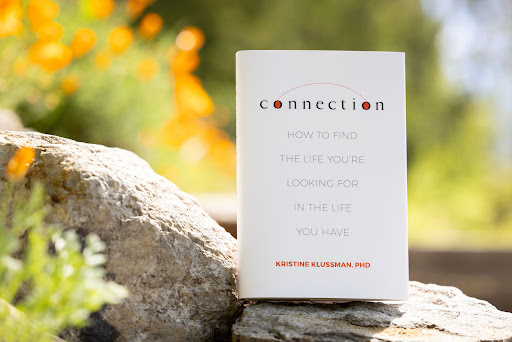
 “This is one of the best books on personal growth I’ve ever read. With warm encouragement and easy, practical steps, Dr. Klussman brings us home to a natural connection, confidence, and ease. You can trust what she says since her path is grounded in science and she’s walked it herself. Clear, brilliant, and so hopeful, this book is a gem.” ―Rick Hanson, PhD, author of Resilient
“This is one of the best books on personal growth I’ve ever read. With warm encouragement and easy, practical steps, Dr. Klussman brings us home to a natural connection, confidence, and ease. You can trust what she says since her path is grounded in science and she’s walked it herself. Clear, brilliant, and so hopeful, this book is a gem.” ―Rick Hanson, PhD, author of Resilient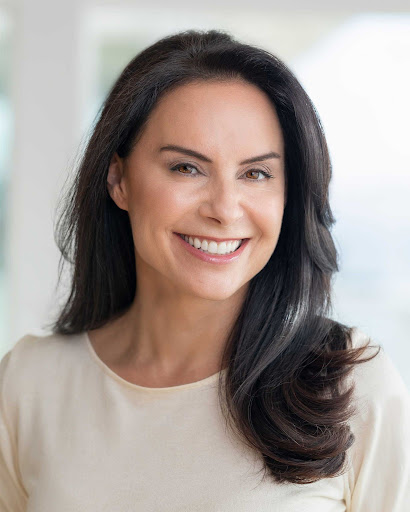 Kristine Klussman, PhD, is a Harvard-trained positive health psychologist, researcher, author, speaker, clinical supervisor, instructor and member of the Palo Alto University faculty. She founded and directs Connection Lab, a psychology research center exploring tools to help people live more meaningful, values-driven, authentic lives. As an invited keynote and TEDx speaker, she shares her approach to wellbeing at conferences and workshops around the country. Her San Francisco-based private practice also offers individual connection coaching. For more, visit kristineklussman.com.
Kristine Klussman, PhD, is a Harvard-trained positive health psychologist, researcher, author, speaker, clinical supervisor, instructor and member of the Palo Alto University faculty. She founded and directs Connection Lab, a psychology research center exploring tools to help people live more meaningful, values-driven, authentic lives. As an invited keynote and TEDx speaker, she shares her approach to wellbeing at conferences and workshops around the country. Her San Francisco-based private practice also offers individual connection coaching. For more, visit kristineklussman.com.
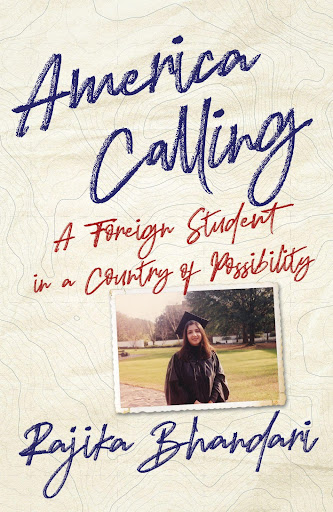 Irvington, NY
Irvington, NY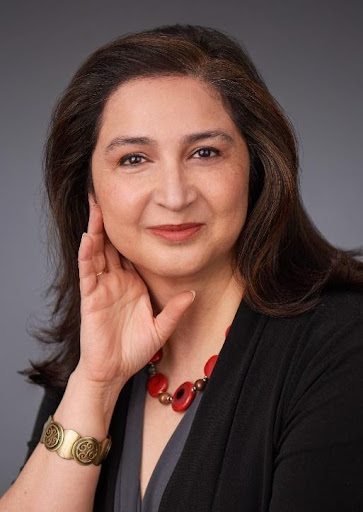 Rajika Bhandari: A former international student from India to the US and an Indian American immigrant, Rajika Bhandari is an international higher education expert, a widely published author, and a sought-after speaker on issues of international education, skilled immigrants, and educational and cultural diplomacy.
Rajika Bhandari: A former international student from India to the US and an Indian American immigrant, Rajika Bhandari is an international higher education expert, a widely published author, and a sought-after speaker on issues of international education, skilled immigrants, and educational and cultural diplomacy.


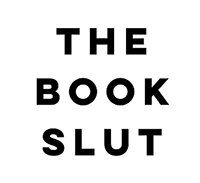
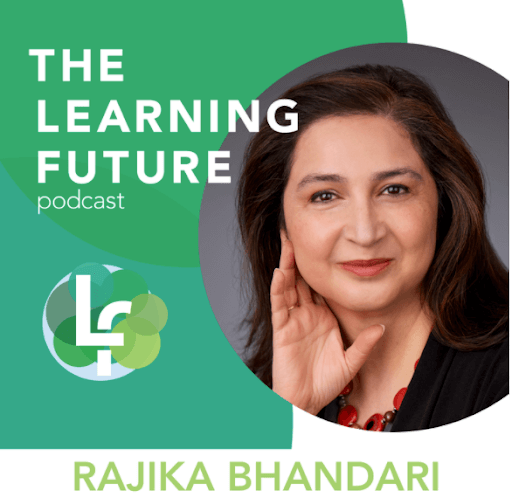 Also featured on
Also featured on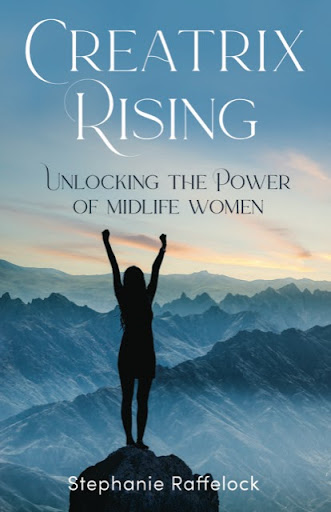 AUSTIN, Texas – From the author of the award-winning book “A Delightful Little Book on Aging” comes a new self-help memoir “Creatrix Rising: Unlocking the Power of Midlife Women” (Aug. 24, 2021, She Writes Press). In her new book, Stephanie Raffelock liberates mold-defying midlife women, tired of the oft-inaccurate characterization of the “old crone,” to amplify the resounding strength within.
AUSTIN, Texas – From the author of the award-winning book “A Delightful Little Book on Aging” comes a new self-help memoir “Creatrix Rising: Unlocking the Power of Midlife Women” (Aug. 24, 2021, She Writes Press). In her new book, Stephanie Raffelock liberates mold-defying midlife women, tired of the oft-inaccurate characterization of the “old crone,” to amplify the resounding strength within.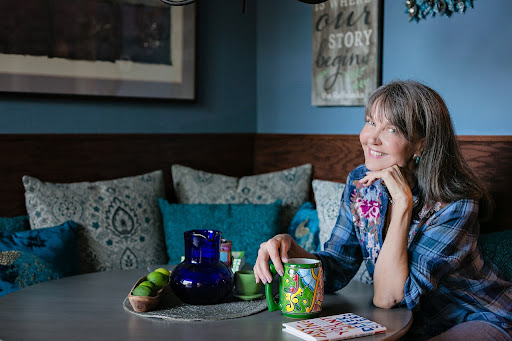 Stephanie Raffelock is the author of “Creatrix Rising, Unlocking the Power of Midlife Women,” (She Writes Press – August, 2021). She also penned the award winning book, “A Delightful Little Book on Aging.”
Stephanie Raffelock is the author of “Creatrix Rising, Unlocking the Power of Midlife Women,” (She Writes Press – August, 2021). She also penned the award winning book, “A Delightful Little Book on Aging.”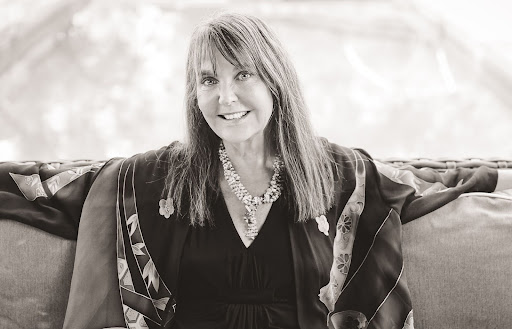
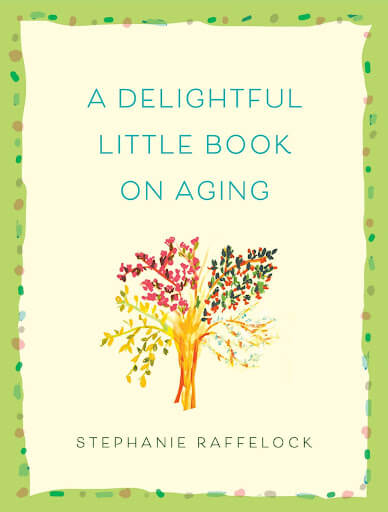
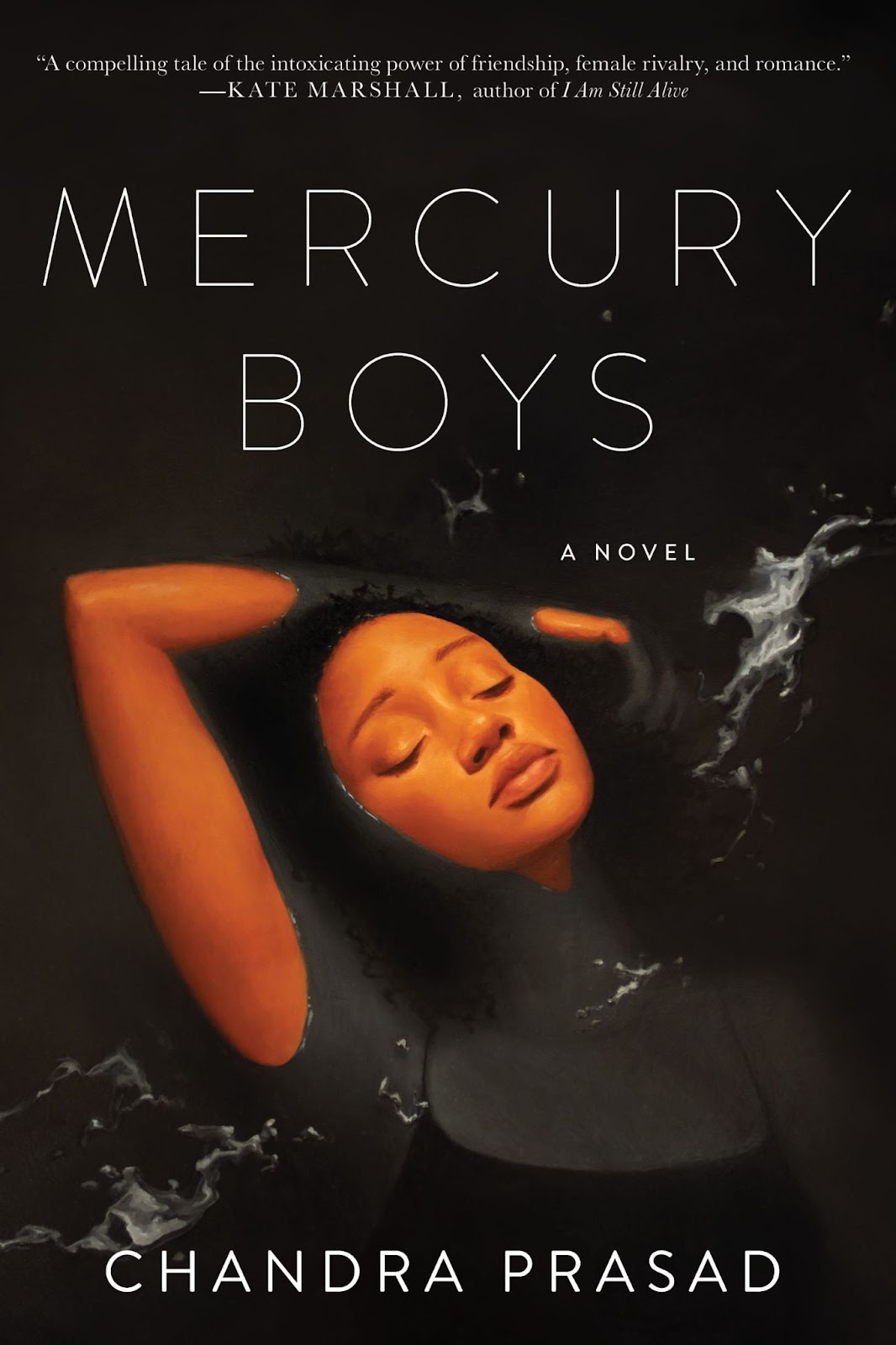 New Haven, CT – Critically acclaimed author Chandra Prasad (Damselfly) returns with Mercury Boys (Aug. 3, 2021, SoHo Teen), an evocative YA story with a historical twist that’s filled with first loves, the struggle to adapt, and the imperious world of young female friendships.
New Haven, CT – Critically acclaimed author Chandra Prasad (Damselfly) returns with Mercury Boys (Aug. 3, 2021, SoHo Teen), an evocative YA story with a historical twist that’s filled with first loves, the struggle to adapt, and the imperious world of young female friendships. Chandra Prasad is the author of the critically acclaimed novels On Borrowed Wings, Death of a Circus, Breathe the Sky, and Damselfly, a female-driven young adult text used both individually in classrooms and in parallel with Lord of the Flies. Prasad is also the editor of—and a contributor to—Mixed, the first-ever anthology of short stories on the multiracial experience. Being half-Asian herself, Prasad has long acknowledged the dearth of significant mixed-race characters in literature, especially for teens and children, and has sought to bring awareness to this issue. For this reason, Prasad chose multiracial protagonists for both her YA novels, Damselfly and Mercury Boys.
Chandra Prasad is the author of the critically acclaimed novels On Borrowed Wings, Death of a Circus, Breathe the Sky, and Damselfly, a female-driven young adult text used both individually in classrooms and in parallel with Lord of the Flies. Prasad is also the editor of—and a contributor to—Mixed, the first-ever anthology of short stories on the multiracial experience. Being half-Asian herself, Prasad has long acknowledged the dearth of significant mixed-race characters in literature, especially for teens and children, and has sought to bring awareness to this issue. For this reason, Prasad chose multiracial protagonists for both her YA novels, Damselfly and Mercury Boys.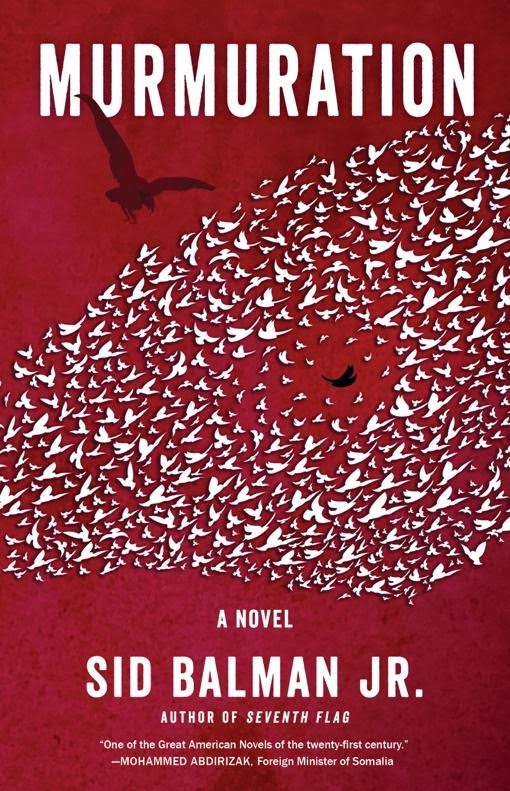 Pulitzer-nominated war and national security correspondent and Writer in Residence at Sul Ross State University Sid Balman, Jr. is releasing a harrowing follow-up to award-winning novel, “Seventh Flag.” The second book in the series, “Murmuration,” will be published on Aug. 3, 2021, with SparkPress.
Pulitzer-nominated war and national security correspondent and Writer in Residence at Sul Ross State University Sid Balman, Jr. is releasing a harrowing follow-up to award-winning novel, “Seventh Flag.” The second book in the series, “Murmuration,” will be published on Aug. 3, 2021, with SparkPress.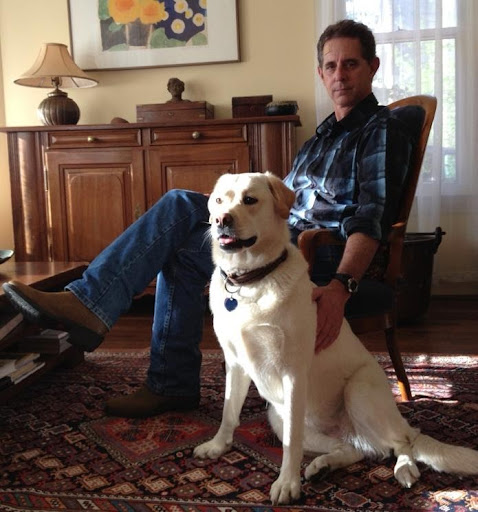 The Writer in Residence at Sul Ross State University and a Pulitzer-nominated national security correspondent, Sid Balman Jr. has covered wars in the Persian Gulf, Somalia, Bosnia-Herzegovina, and Kosovo, and has traveled extensively with two American presidents and four secretaries of state on overseas diplomatic missions. With the emergence of the web and the commoditizing of content, Balman moved into the business side of communications. In that role, over two decades, he helped found a news syndicate focused on the interests of women and girls, served as communications chief for the largest consortium of U.S. international development organizations, led two successful progressive campaigning companies, and launched a new division at a large international development firm centered on violent radicalism and other security issues on behalf of governments and nonprofits. A fourth-generation Texan, as well as a climber, surfer, paddler, and benefactor to Smith College, Balman splits time between Alpine Texas, where he is the Writer in Residence at Sul Ross State University, and Washington DC with three kids, and two dogs.
The Writer in Residence at Sul Ross State University and a Pulitzer-nominated national security correspondent, Sid Balman Jr. has covered wars in the Persian Gulf, Somalia, Bosnia-Herzegovina, and Kosovo, and has traveled extensively with two American presidents and four secretaries of state on overseas diplomatic missions. With the emergence of the web and the commoditizing of content, Balman moved into the business side of communications. In that role, over two decades, he helped found a news syndicate focused on the interests of women and girls, served as communications chief for the largest consortium of U.S. international development organizations, led two successful progressive campaigning companies, and launched a new division at a large international development firm centered on violent radicalism and other security issues on behalf of governments and nonprofits. A fourth-generation Texan, as well as a climber, surfer, paddler, and benefactor to Smith College, Balman splits time between Alpine Texas, where he is the Writer in Residence at Sul Ross State University, and Washington DC with three kids, and two dogs.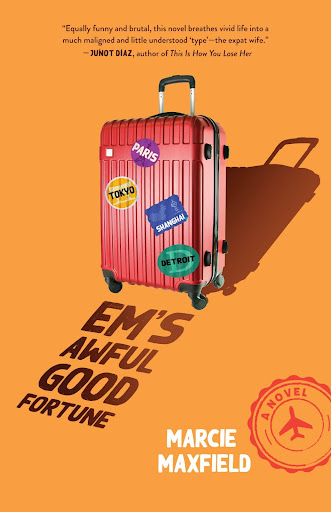 LOS ANGELES, CA – Marcie Maxfield debuts as a novelist with her raw exploration of the expatriate journey,
not just through various countries, but through the personal road to self discovery.
LOS ANGELES, CA – Marcie Maxfield debuts as a novelist with her raw exploration of the expatriate journey,
not just through various countries, but through the personal road to self discovery.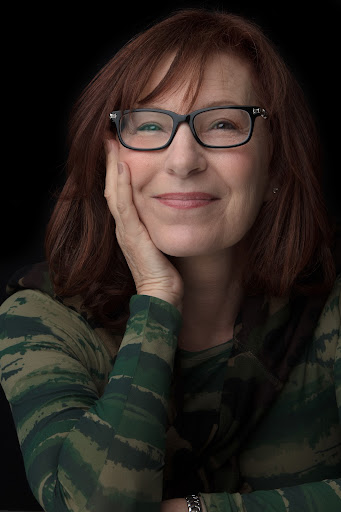 Marcie Maxfield’s voice is fierce, authentic and personal. Her debut novel, Em’s Awful Good Fortune, is based on her experiences living overseas as a tagalong wife. Her play Girls Together Always—a collection of coming-of-age stories about “growing up girl”—won the ENCORE! Producer’s Award at the Hollywood Fringe Festival. Maxfield is a teen mentor and volunteer for WriteGirl—an L.A. organization dedicated to empowering girls through creativity. She is married with two kids, a French bulldog named Bader, and two rescue cats named Hunky and Dory. They live in Los Angeles, CA.
Marcie Maxfield’s voice is fierce, authentic and personal. Her debut novel, Em’s Awful Good Fortune, is based on her experiences living overseas as a tagalong wife. Her play Girls Together Always—a collection of coming-of-age stories about “growing up girl”—won the ENCORE! Producer’s Award at the Hollywood Fringe Festival. Maxfield is a teen mentor and volunteer for WriteGirl—an L.A. organization dedicated to empowering girls through creativity. She is married with two kids, a French bulldog named Bader, and two rescue cats named Hunky and Dory. They live in Los Angeles, CA. NEW YORK, New York – From Ivy League admissions expert Dr. Aviva Legatt comes an insider’s college admissions guide that teaches students to identify and harness their authentic passions, stand out from the crowd, and achieve their dreams in college and beyond, “Get Real and Get In” (St. Martin’s Griffin, August 3, 2021).
NEW YORK, New York – From Ivy League admissions expert Dr. Aviva Legatt comes an insider’s college admissions guide that teaches students to identify and harness their authentic passions, stand out from the crowd, and achieve their dreams in college and beyond, “Get Real and Get In” (St. Martin’s Griffin, August 3, 2021). Dr. Aviva Legatt is the admissions expert and founder of Ivy Insight, the gold standard in college admissions consulting for undergraduate college applications. An in-demand leadership and college admissions speaker with a fresh perspective, Dr. Legatt has been hailed by the New York Times as a trustworthy expert on college admissions, and recognized as an expert in corporate culture and diversity as a faculty member for Coursera and the University of Pennsylvania.
Dr. Aviva Legatt is the admissions expert and founder of Ivy Insight, the gold standard in college admissions consulting for undergraduate college applications. An in-demand leadership and college admissions speaker with a fresh perspective, Dr. Legatt has been hailed by the New York Times as a trustworthy expert on college admissions, and recognized as an expert in corporate culture and diversity as a faculty member for Coursera and the University of Pennsylvania.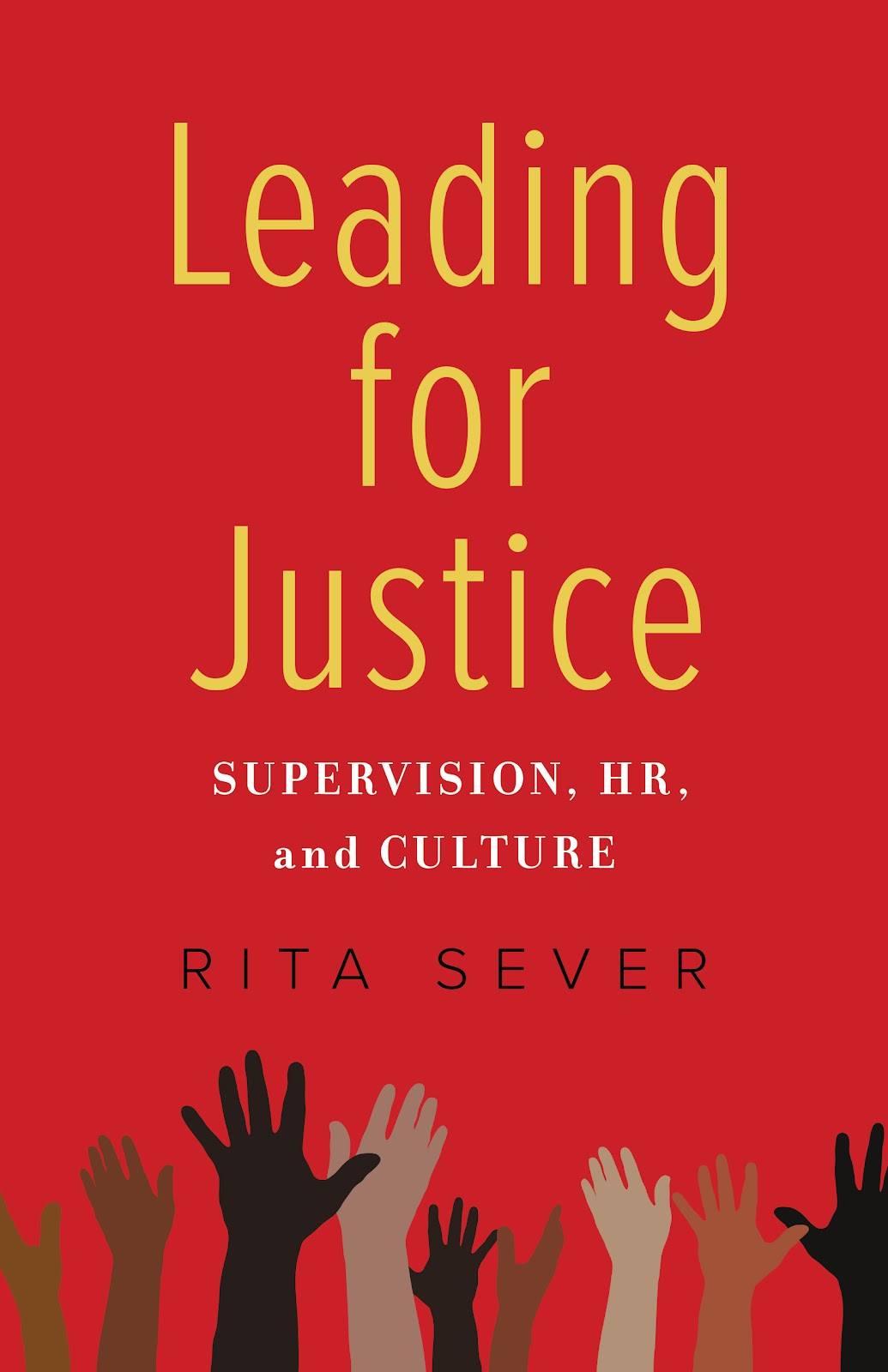 SANTA ROSA, California – With special focus on social justice organizations and nonprofits, author Rita Sever encourages a unified approach to human resources in her new book, Leading for Justice. Sever, a business consultant committed to advancing social justice causes, curates her advice in this book, helping leaders identify and address challenges in the workplace to help level the playing field and promote equity.
SANTA ROSA, California – With special focus on social justice organizations and nonprofits, author Rita Sever encourages a unified approach to human resources in her new book, Leading for Justice. Sever, a business consultant committed to advancing social justice causes, curates her advice in this book, helping leaders identify and address challenges in the workplace to help level the playing field and promote equity.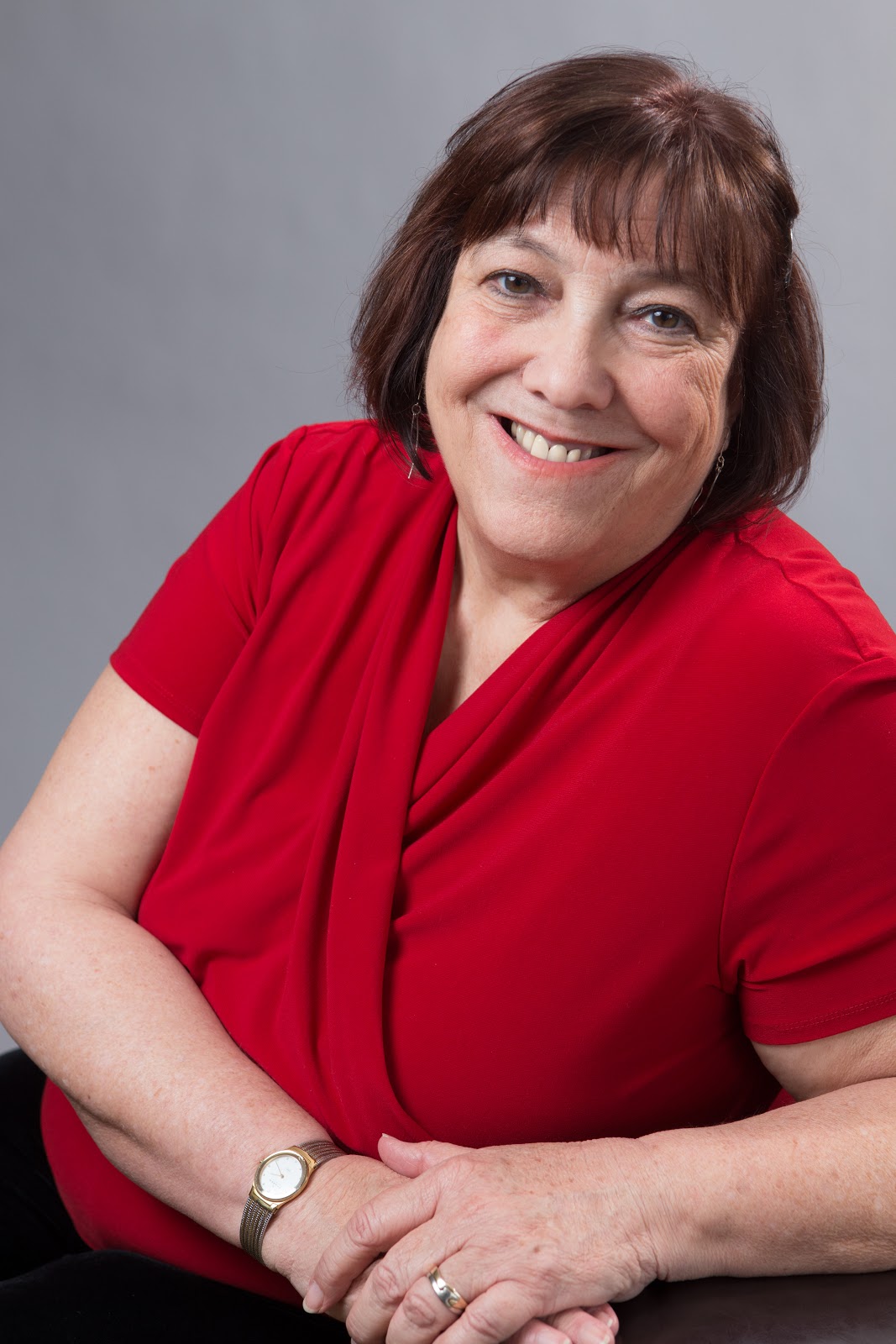 Growing up the youngest of six kids in a low-income family, Rita Sever often had the experience of feeling unseen and unheard. She became very focused on hearing and seeing others—as individuals and within the groups that we live and work in. This led her to recognize the uneven playing field that the world calls “equal.” This awareness has been part of her unified approach to human resources and organizational development for over twenty years. She worked as a staff member for nine years at an AIDS organization and another nine years at a community action agency. In her consulting practice, she works with social justice organizations throughout the United States.
Growing up the youngest of six kids in a low-income family, Rita Sever often had the experience of feeling unseen and unheard. She became very focused on hearing and seeing others—as individuals and within the groups that we live and work in. This led her to recognize the uneven playing field that the world calls “equal.” This awareness has been part of her unified approach to human resources and organizational development for over twenty years. She worked as a staff member for nine years at an AIDS organization and another nine years at a community action agency. In her consulting practice, she works with social justice organizations throughout the United States.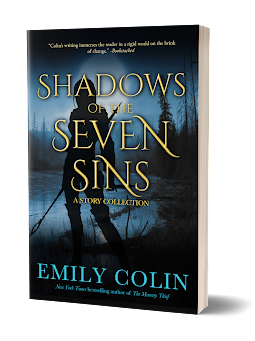 “Shadows of the Seven Sins” Short Story Collection
“Shadows of the Seven Sins” Short Story Collection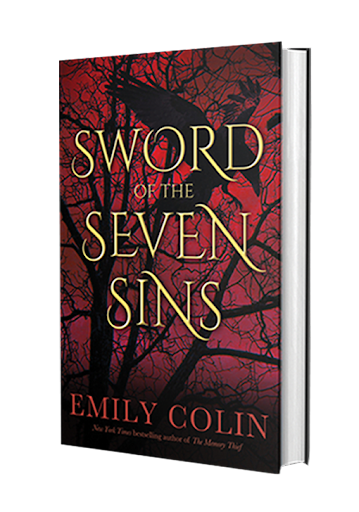 “Sword of the Seven Sins” Book 1
“Sword of the Seven Sins” Book 1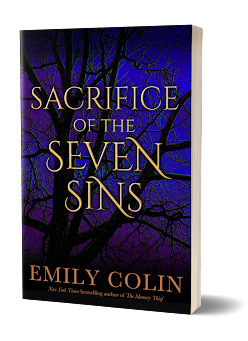 “Sacrifice of the Seven Sins” Novella
“Sacrifice of the Seven Sins” Novella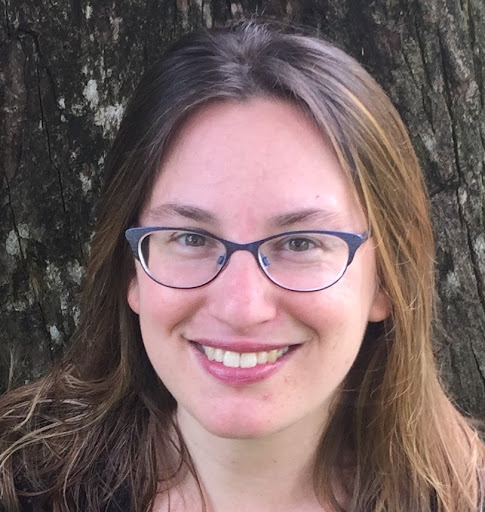 EMILY COLIN’S debut novel, “The Memory Thief” was a New York Times bestseller and a Target Emerging Authors Pick. She is also the author of “The Dream Keeper’s Daughter” (Ballantine Books). Her young adult titles include the anthology “Wicked South: Secrets and Lies” and the Seven Sins series, both from Blue Crow Publishing, as well as the anthology “Unbound: Stories of Transformation, Love, and Monsters” (Five Points Press). Regardless of whether she’s writing for adults or teens, all of her books feature love stories and supernatural twists.
EMILY COLIN’S debut novel, “The Memory Thief” was a New York Times bestseller and a Target Emerging Authors Pick. She is also the author of “The Dream Keeper’s Daughter” (Ballantine Books). Her young adult titles include the anthology “Wicked South: Secrets and Lies” and the Seven Sins series, both from Blue Crow Publishing, as well as the anthology “Unbound: Stories of Transformation, Love, and Monsters” (Five Points Press). Regardless of whether she’s writing for adults or teens, all of her books feature love stories and supernatural twists.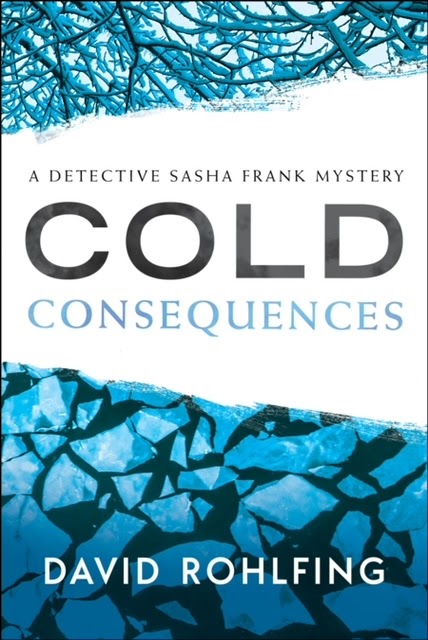 BLOOMINGTON, IL – Fan favorite detective Sasha Frank is back in the highly anticipated series prequel, “Cold Consequences” (River Grove Books, July 27, 2021). The prequel traces the murder of Ashley Cummins, the granddaughter of a powerful judge, who is unexpectedly shot when a drug deal gets intercepted late one night. As detective Frank works to track down her murderer, all of his leads start showing up dead. After hitting wall after wall, Sasha happens upon a weak link and unravels a thread from a complicated web that leads him to one suspect—will Sasha be able to prove who the killer is and take down the person responsible for the murders?
BLOOMINGTON, IL – Fan favorite detective Sasha Frank is back in the highly anticipated series prequel, “Cold Consequences” (River Grove Books, July 27, 2021). The prequel traces the murder of Ashley Cummins, the granddaughter of a powerful judge, who is unexpectedly shot when a drug deal gets intercepted late one night. As detective Frank works to track down her murderer, all of his leads start showing up dead. After hitting wall after wall, Sasha happens upon a weak link and unravels a thread from a complicated web that leads him to one suspect—will Sasha be able to prove who the killer is and take down the person responsible for the murders?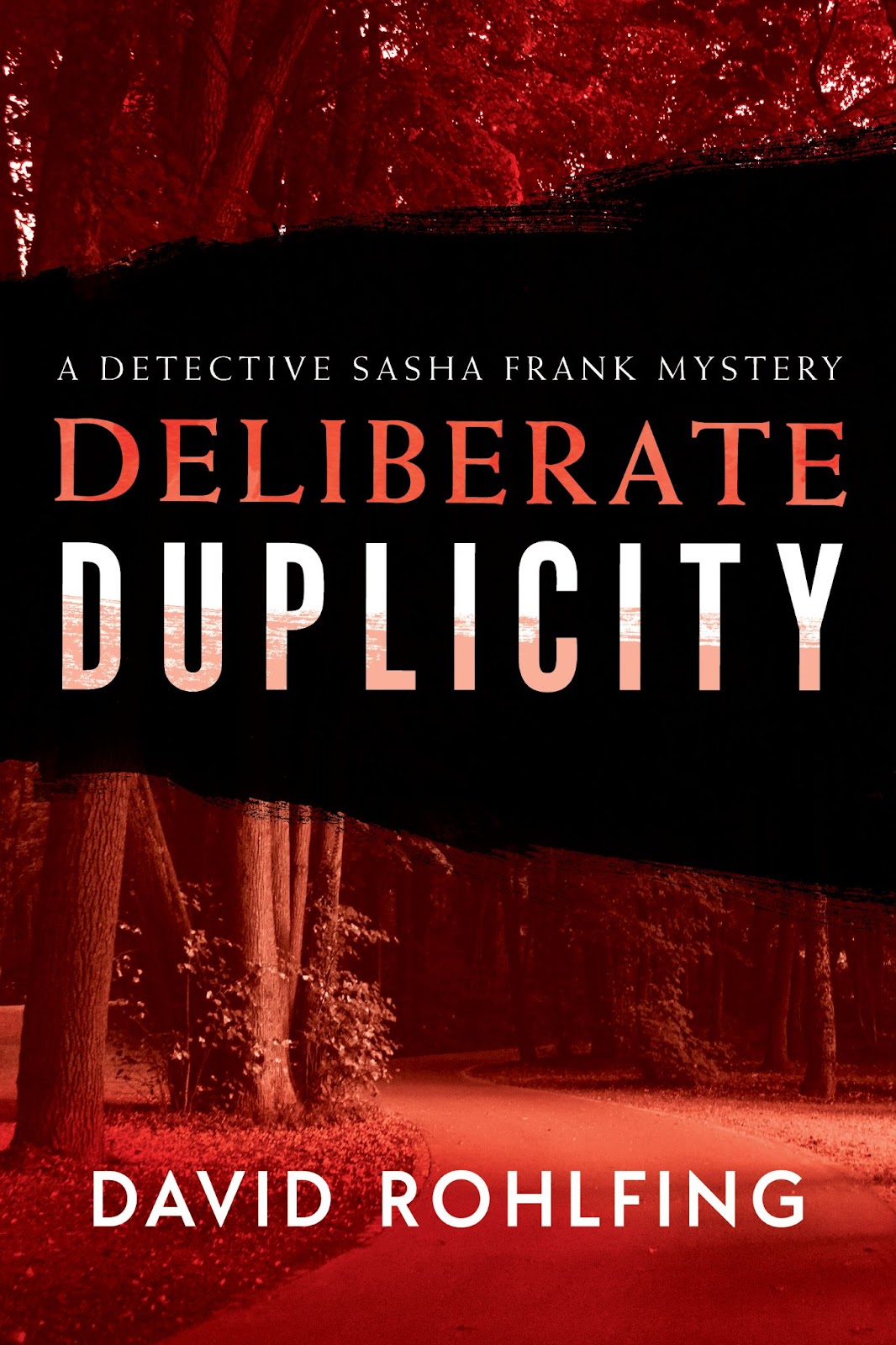 In “Deliberate Duplicity,” dead bodies are found at different points along the Constitution Trail in Bloomington-Normal, Illinois. The work of a calculating, methodical killer, each body is posed on the ground with the eyes manipulated so they remain wide open. As the story begins to unravel, the ordinarily calm and collected Sasha Frank begins to feel the immense pressure of the case. Will he be able to solve the mystery before time runs out?
In “Deliberate Duplicity,” dead bodies are found at different points along the Constitution Trail in Bloomington-Normal, Illinois. The work of a calculating, methodical killer, each body is posed on the ground with the eyes manipulated so they remain wide open. As the story begins to unravel, the ordinarily calm and collected Sasha Frank begins to feel the immense pressure of the case. Will he be able to solve the mystery before time runs out? DAVID ROHLFING: After a long career in business that gave him the opportunity to travel to all but one continent and countless countries around the globe, David decided to write his first novel, “Deliberate Duplicity.” He lives in Illinois with his wife.
DAVID ROHLFING: After a long career in business that gave him the opportunity to travel to all but one continent and countless countries around the globe, David decided to write his first novel, “Deliberate Duplicity.” He lives in Illinois with his wife.